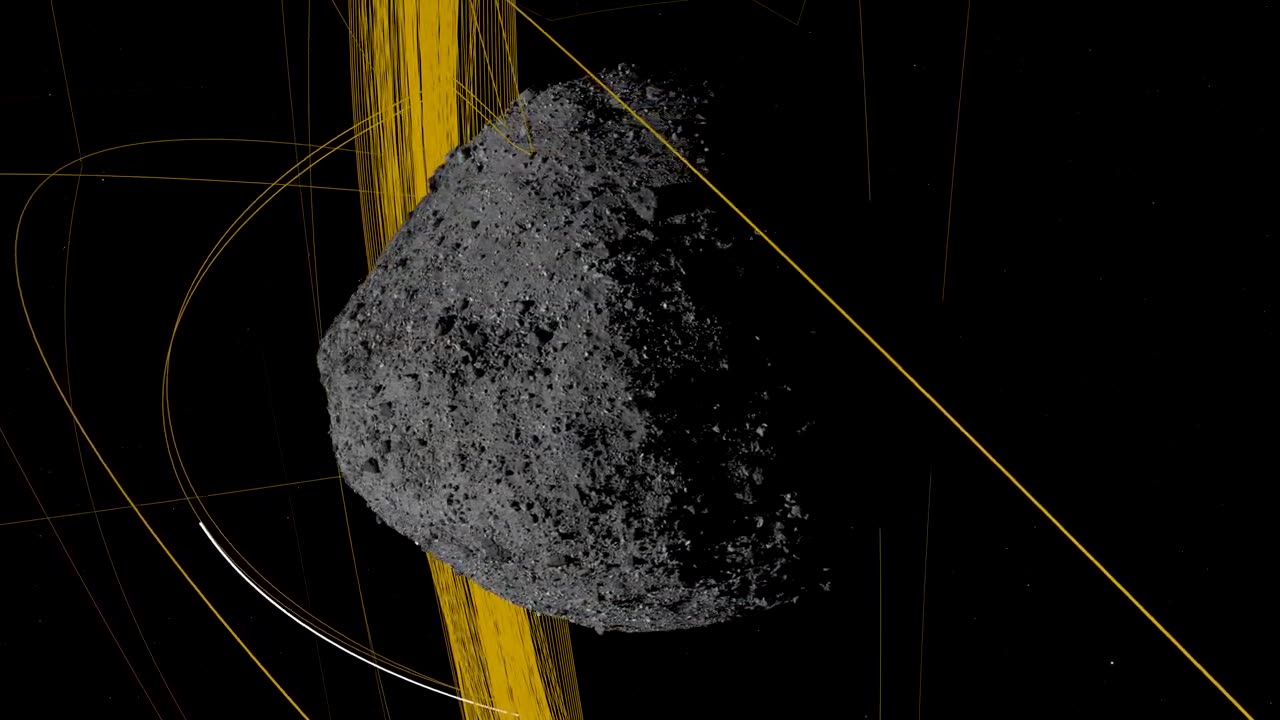Premium Only Content

4K Earth Views Extended Cut for Earth Day 2021
The NASA Psyche mission is an ambitious space exploration endeavor aimed at studying a unique and intriguing asteroid named 16 Psyche. This asteroid is located in the asteroid belt between Mars and Jupiter and is of particular interest because it is believed to be a remnant from the early days of our solar system. What makes 16 Psyche especially captivating is its composition – it's thought to be primarily made up of metallic materials, possibly including iron and nickel, which sets it apart from most other asteroids that are predominantly rocky or icy.
Here's a description of the NASA Psyche mission and its objectives:
Mission Objectives:
The primary goal of the Psyche mission is to better understand the history and composition of planetesimals – building blocks of planets – by studying the asteroid 16 Psyche up close. By doing so, scientists hope to gain valuable insights into the formation and evolution of our solar system. Additionally, Psyche's unique metallic composition might provide clues about the core of a planet that was disrupted or never fully formed.
Mission Details:
Spacecraft: The Psyche spacecraft, designed and built by NASA's Jet Propulsion Laboratory (JPL), is equipped with a suite of scientific instruments to carry out detailed observations and measurements of the asteroid.
Launch: The spacecraft was launched atop a SpaceX Falcon Heavy rocket from Cape Canaveral Air Force Station in Florida.
Journey: The journey to 16 Psyche involves a multi-year interplanetary cruise, during which the spacecraft performs necessary trajectory adjustments and flybys to gain speed and ensure a precise arrival at the asteroid.
Arrival and Orbit: Upon reaching 16 Psyche, the spacecraft will enter orbit around the asteroid to conduct a comprehensive study of its surface, composition, and other characteristics.
Scientific Instruments: The Psyche spacecraft is equipped with various scientific instruments, including cameras, spectrometers, and a magnetometer. These instruments will help scientists gather information about the asteroid's topography, composition, and magnetic field.
Challenges: The Psyche mission presents unique challenges due to the spacecraft's need to operate in close proximity to a metallic object. The asteroid's strong magnetic field can affect the spacecraft's systems, requiring careful engineering and navigation.
Duration: The mission's duration, from launch to the end of its primary operations, will span several years.
Expected Discoveries and Implications:
Studying 16 Psyche could provide crucial insights into the differentiation of planetary bodies and the role of metallic cores in planetary formation. If the asteroid indeed turns out to be the exposed core of a protoplanet, it would offer a rare opportunity to study a core directly, as Earth's core is inaccessible for direct examination.
The mission's findings could shed light on fundamental questions about how planets form and evolve and contribute to our understanding of the early solar system's dynamics and processes.
In summary, the NASA Psyche mission represents a fascinating journey to explore an asteroid unlike any other, with the potential to reshape our understanding of planetary formation and the history of our solar system.
-
 1:02:41
1:02:41
The Rubin Report
1 hour agoMSNBC Hosts Shock Audience by Disclosing Details of Their Secret Trump Meeting
9.86K19 -
 2:09:44
2:09:44
Steven Crowder
3 hours ago🔴 Why Trump's FCC PICK Terrifies the Deep State & Bathroom Trouble for Trans Rep Sarah McBride
201K179 -
 LIVE
LIVE
Benny Johnson
1 hour ago🚨Did Biden Just Start World War 3 To SABOTAGE Trump!? Ukraine Hits Russia With US Missiles, NUCLEAR
11,052 watching -
 1:22:23
1:22:23
Graham Allen
4 hours agoUkraine Attacks Russia With Us Weapons!!!! WWIII?! MAGA Is At War With DC Elites!!
112K101 -
 2:26:35
2:26:35
Matt Kohrs
12 hours agoSTOCKS PLUMMET || The MK Show
36.7K5 -
 LIVE
LIVE
LFA TV
16 hours agoIDENTIFYING PROBLEMS EARLY! | LIVE FROM AMERICA 11.19.24 11am EST
5,810 watching -
 LIVE
LIVE
The Shannon Joy Show
19 hours ago🔥🔥Live Exclusive With Peter Schiff! Bitcoin MANIA - NEW Gold Or FOOLS Gold? Technocrats Speculative Frenzy Is Creating The Bitcoin Bubble - Will Taxpayers Get Screwed When It Pops?🔥🔥
254 watching -
 53:32
53:32
Officially Unfollowed
1 hour ago $0.44 earnedMaking America Healthy Again | Ep. 16
4.86K1 -
 22:38
22:38
CapEx
11 hours agoThis Sector is Unjustly DOWN 90% & Everyoneʼs Asleep at the Wheel
9.85K -
 37:02
37:02
BonginoReport
5 hours agoTrump's Greatest Cabinet Pick (Ep.88) - 11/19/24
118K151